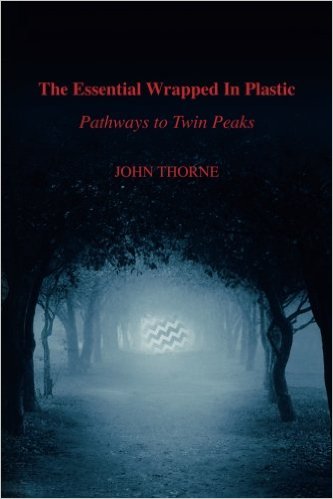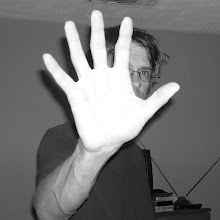Who is this mysterious person that Jeffries mentions? Is Judy important or is she some piece of nonsensical fluff thrown into the film by David Lynch and co-writer Robert Engels? Can her identity be gleaned from clues in the film, script, or series?
The answer to the last question is: Yes. But here's the catch; Judy has a different identity depending on which version of FWWM you examine. Judy is a character (or an idea) that changed as FWWM evolved through scripting, shooting and editing.
The Judy of Twin Peaks
The most popular theory about Judy is that she represents another missing or murdered victim like Teresa Banks or Laura Palmer. She fits into a cyclical pattern suggested by the film and series – a girl (Laura, Teresa, Judy) is killed; an FBI agent (Cooper, Chet Desmond, Phillip Jeffries) is assigned to find the killer. The case is never completely solved because the agent ends up missing (or in Cooper's case, severely compromised).
Fire Walk With Me describes Phillip Jeffries as "long lost," suggesting Jeffries "disappeared" while on some assignment. The film also features the disappearance of FBI agent Chet Desmond who has been investigating the murder of Teresa Banks. We know from the series that at least part of Cooper will disappear after he solves the Laura Palmer case. (Cooper's "good self" will be trapped in the Black Lodge.) So the pattern is compelling: three agents disappear while on assignment; two obviously investigating the death of a young woman. Connect the dots and surely one can assume that the third missing agent (Jeffries) was also investigating the death of a young woman, in this case, Judy.
It's a great theory. It fits nicely with the facts established in the series and (apparently) in the film. It's a clean and precise way of tidying up an annoying loose end. And it provides more relevance for the presence of Phillip Jeffries in the story. What it does not do, however, is explain why—at two hours, eight minutes and 21 seconds into the film—an image of a monkey appears on screen and clearly says the word, "Judy." This very deliberate scene suggests something else entirely about Judy. But what?
The Judy of the Scripts
The monkey does not appear in either the pre-release or final draft of the FWWM script. However, the name, "Judy" does. In fact, the various scripts provide some tantalizing clues about who Judy could be.
In an early draft (dated July 3rd, 1991) Phillip Jeffries first appears in a Buenos Aires hotel where the head clerk hands him a note from a "young lady." Soon after, Jeffries appears in Cole's office in Philadelphia where he tells the assembled agents he's "not gonna talk about Judy." Jeffries says, "I want to tell you everything, but I don't have a lot to go on. But I'll tell you one thing: Judy is positive about this." Then Jeffries drops a fascinating detail: "Her sister's there, too. At least part of her."
This early draft of the script provides strong evidence that Judy was a living person whose note to Jeffries compelled him to go to Philadelphia to tell Cole, "everything." (After all, "Judy is positive about this.") This script also introduces a second mysterious person to identify – Judy's sister. It is possible that this sister may be Josie Packard who "died" in the TV series but whose spirit seemed to live on in the walls (and drawers) of the Great Northern hotel. Robert Engels attempted to clarify some of these early draft mysteries in an interview that appeared in Wrapped In Plastic 58: "The thing behind Judy has to do with where David Bowie [Phillip Jeffries] came from …. He was down there [Buenos Aires], and that's where Judy is. I think Joan Chen [Josie] is there, and I think Windom Earle is there. It's this idea that there are these portals around the world, and Phillip Jeffries had one hell of a trip to Buenos Aires and back! He really doesn't want to talk about Judy because that reminds him of whatever happened to him." When asked if Josie, therefore, could be Judy's sister, Engels replied, "Yes. Yes, I think that is true."
But when Lynch and Engels revised the script for the shooting draft (dated August 8th 1991), they altered aspects of Judy's identity. In the later draft Jeffries still receives a note from the head clerk (who says a young lady left it) and Jeffries also tells Cole that "Judy is positive about this." But he makes no reference to Judy's sister. Instead, he says he "found something in Seattle at Judy's." This line now links Judy to Teresa Banks and Laura Palmer—all three women lived in Washington State. It also suggests that Judy could have had some interaction with the Lodge residents (particularly Bob) who exist in the Pacific Northwest (where they physically manifest themselves).
So we know that Judy could be related to Josie. She could be alive and in Buenos Aires—or she could be dead and from Seattle. But none of this matters because all evidence about Buenos Aires and Seattle and Josie was deleted from the final version of FWWM. All we know for certain is that Phillip Jeffries mentions Judy and 100 minutes later so does the monkey.
So we are back to the question: Who is Judy and why does the monkey say her name?
The Judy of Fire Walk With Me
David Lynch and Robert Engels originally envisioned "a whole other set of mythology" to include in FWWM. Judy and her sister were products of that mythology. But this mythology had to be abandoned when Lynch realized that the additional backstory was too burdensome for one film. As a result, he likely deleted most references to Judy during editing. But Lynch may have been stuck with one reference to Judy he could not easily remove.
Jeffries makes a dramatic entrance into Cole's office and his very first line is the one about Judy ("I'm not gonna talk about Judy"). It's a great line, wonderfully delivered by David Bowie. What's more, it establishes a detached and incoherent feel to Jeffries and it reinforces his other-worldly nature. The line is also a part of one long continuous take in which Jeffries enters the office and confronts the agents. As such, there was no way for Lynch to remove the line without disrupting Jeffries' introduction to the scene. In other words, given the construction of the scene it would have been impossible for Lynch to bring Jeffries into the office, establish his physical position in relation to the other characters, and also delete the line. To do so, Lynch would have had to re-shoot the scene, an unlikely endeavor given the time and money it would to take to re-assemble the actors and re-establish the set.
So Lynch was stuck with a line about Judy. But because the original and complex identity of Judy (Josie's sister or first murder victim) was now abandoned, Lynch had to provide a new identity for the mysterious Judy, especially since he was trying to make FWWM a stand-alone film.
And that's just what David Lynch did; he found another persona to attach to the name. That persona was Laura Palmer.
Lynch reintroduces "Judy" to the film after Laura Palmer has been killed. He deliberately places a close-up shot of a monkey uttering the word, "Judy," just before he cuts to another close-up of the dead Laura. This simple edit obviously establishes a connection between the name and the character: "Judy" is said/Laura is shown.
So, OK, if Judy is Laura, what's it all mean? I admit there is no easy – or exclusive – answer to this question. Any interpretation is subjective, any "solution" dependent upon the predilections and analytic approaches of the observer. The short and simple answer is that Laura Palmer was a convenient candidate to become "Judy." Lynch needed to provide some identity and who better than Laura?
Of course, we expect that, in Lynch's mind, there is some deeper meaning – some substantive connection – between Laura and Judy. Perhaps in a self-contained, "stand-alone" FWWM the mysterious Judy simply becomes a "code word" for Laura, a symbolic representation of the idea of Laura Palmer.
Names and identities have always been fluid concepts in Lynch's work; any study of Lost Highway or Mulholland Drive shows this to be the case. Perhaps Judy functions as a "secret name" for Laura, one that empowers her or someone else. David Lynch's lyrics to the song, "Floating," from Julee Cruise's 1990 album, Floating Into the Night, contains the intriguing lines: "When you told your secret name/ I burst in flame and burn." This line echoes Laura's comments to Donna about falling in space: "For a long time you wouldn't feel anything. Then you would burst into fire … forever." Are secret names words of power? Do they tap into an energy that is unfathomable in "reality?" Lynch's investigation into the slippery nature of names and identity hints at these provocative themes.
But let's be careful. Assigning meaning to Lynch films is always a tricky proposition and nowhere is that more true than with FWWM. The film was continually evolving through scripting, shooting and editing. The purpose of characters, scenes and dialogue changed as Lynch sought to create a consistent, cohesive work that transcended the trappings of the televised series. Lynch resisted committing to any specific backstory and was open to changing and redirecting the story material as the process continued. Robert Engels explained that the story behind FWWM was never concrete: "It was free-form – David would start to look at something and say, 'I think it is more interesting to go this way.'"
So with that in mind, Judy could be anything or anybody: A living being, an unknown victim—or Laura Palmer. Or maybe she is nothing more than the original inspiration to Robert Engels when he wrote the script: "Judy – the name is from my sister-in-law. I think that's where it came from."



